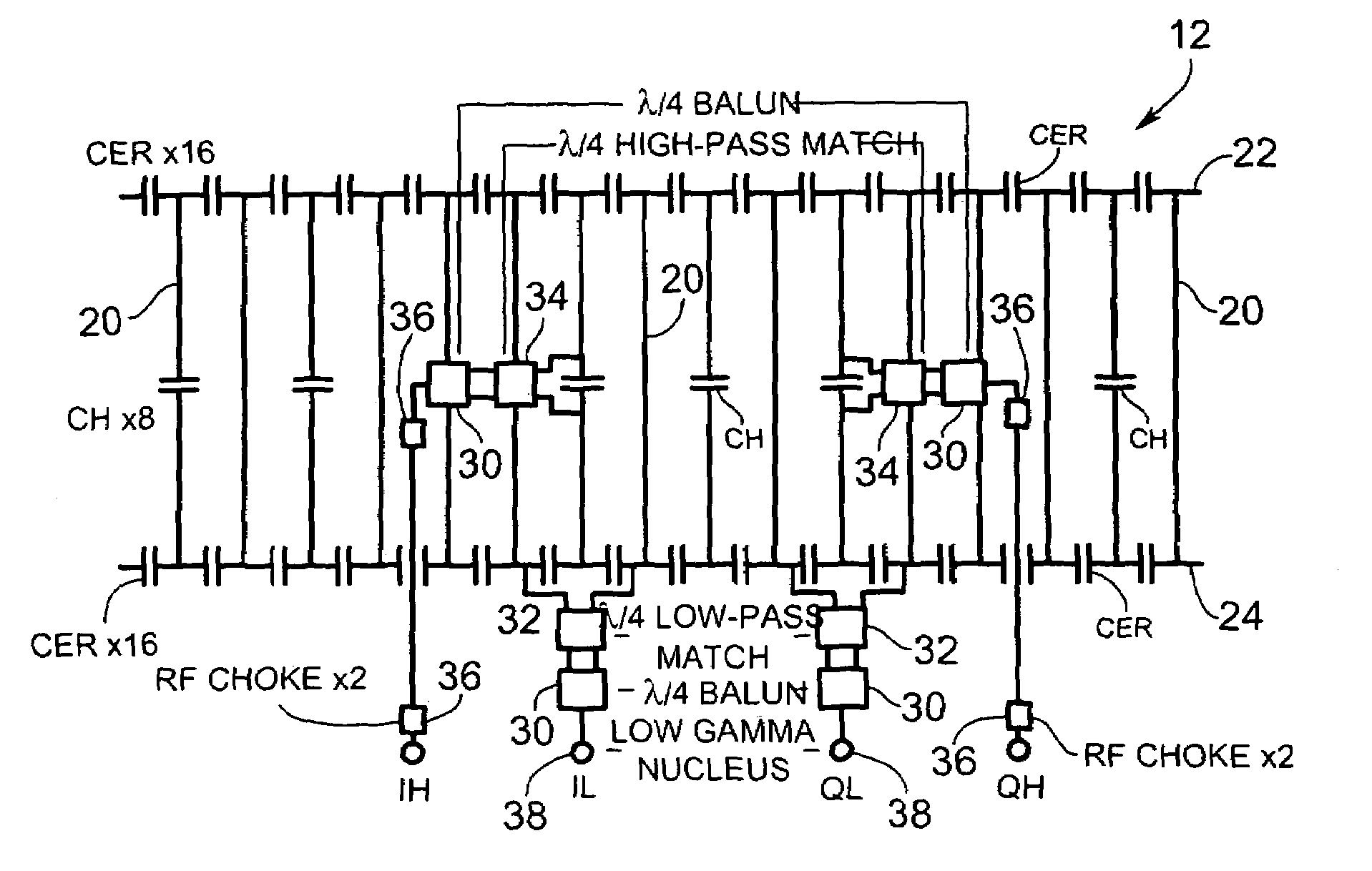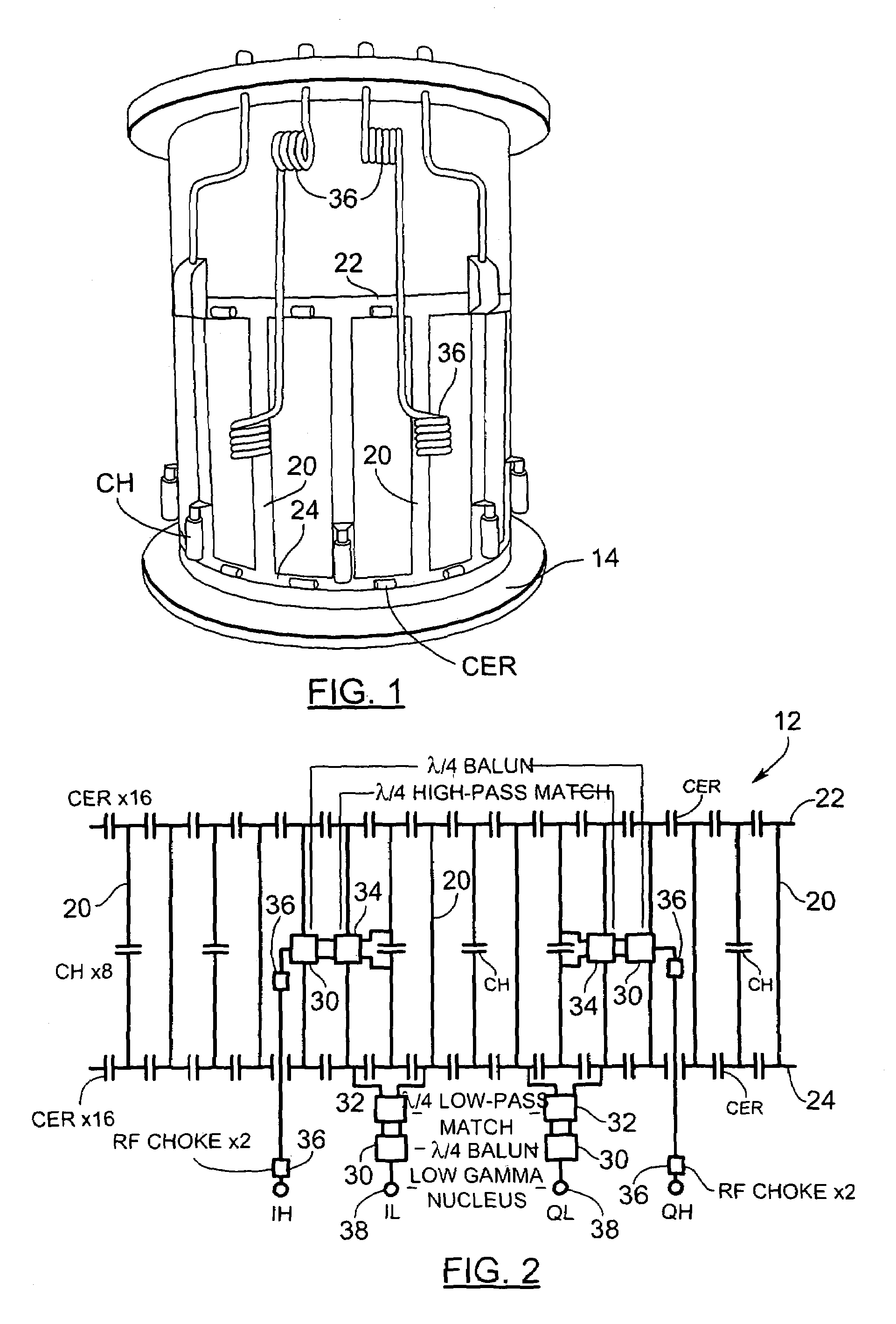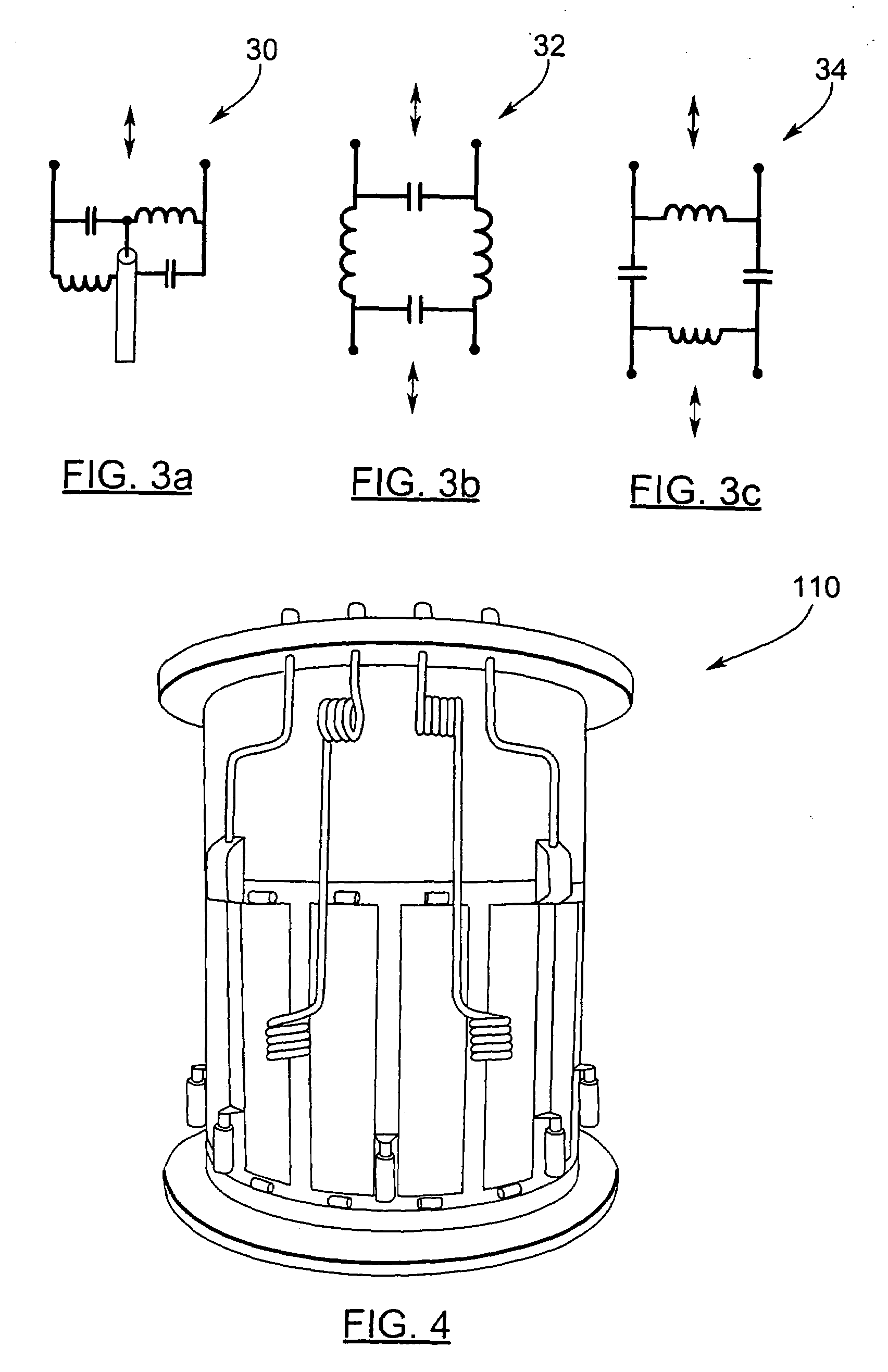Multiply-tuned volume resonator for magnetic resonance imaging and spectroscopy
a magnetic resonance imaging and multi-tuned technology, applied in the field of magnetic resonance imaging, can solve the problems of single-tuned rf coil registration errors, investigation utilizing the nuclear overhauser effect (noe) or proton decoupling, and limiting the bird cage coil to single-tuned imaging applications, so as to reduce the claustrophobic environment, reduce the loss of electric field, and reduce the effect of registration errors
- Summary
- Abstract
- Description
- Claims
- Application Information
AI Technical Summary
Benefits of technology
Problems solved by technology
Method used
Image
Examples
Embodiment Construction
[0050]Turning now to FIGS. 1 and 2, a multiply-tuned volume resonator is shown and is generally identified by reference numeral 10. In this particular embodiment, the volume resonator is of a hybrid, unshielded cylindrical birdcage design and is dual-tuned. Specifically, the volume resonator 10 is tuned for 1H high frequency paramagnetic nuclei and for 31P low frequency paramagnetic nuclei. The volume resonator 10 comprises a birdcage 12 mounted on a spool-shaped support 14 formed of electrically non-conductive material such as for example plastic.
[0051]Birdcage 12 is generally cylindrical and comprises an even number of generally equally spaced, generally parallel column elements 20 joined at their ends to upper and lower end rings 22 and 24 respectively. The total number of column elements 20 in the volume resonator 10 is divisible by four (4) i.e. 12, 16, 24, 32 etc.
[0052]Reactive tuning elements in the form of single-valued capacitors CER are provided along the end rings 22 and ...
PUM
 Login to View More
Login to View More Abstract
Description
Claims
Application Information
 Login to View More
Login to View More - R&D
- Intellectual Property
- Life Sciences
- Materials
- Tech Scout
- Unparalleled Data Quality
- Higher Quality Content
- 60% Fewer Hallucinations
Browse by: Latest US Patents, China's latest patents, Technical Efficacy Thesaurus, Application Domain, Technology Topic, Popular Technical Reports.
© 2025 PatSnap. All rights reserved.Legal|Privacy policy|Modern Slavery Act Transparency Statement|Sitemap|About US| Contact US: help@patsnap.com



